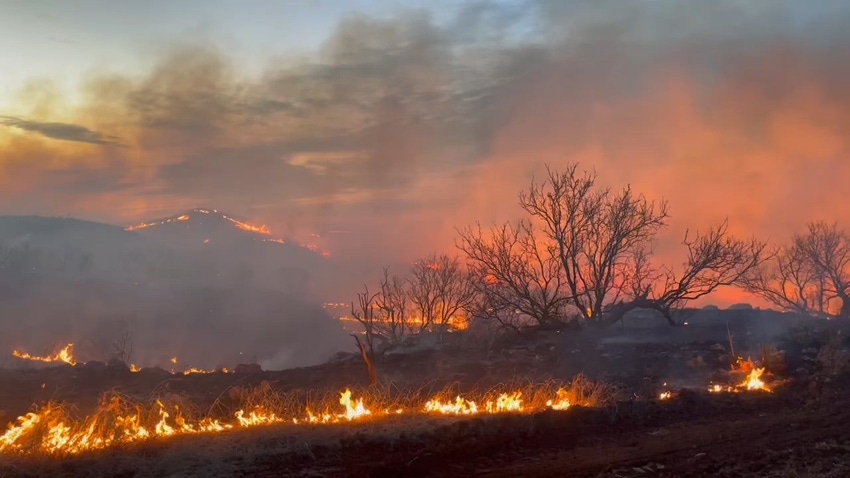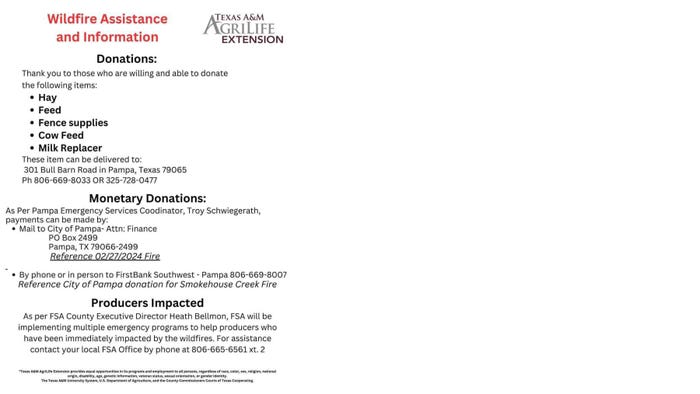
As the state’s largest wildfire in Texas history continues to rage in the Panhandle and parts of Oklahoma, consuming homes, livestock and ranching facilities, many are asking how they can help.
Multiple, if not hundreds, of people have taken to social media to offer services or supplies. As people try to decipher where, how, and to whom to give, Erica Irlbeck, Texas Tech University, says that through her research on natural disaster communications, while donations are well-meaning, they “can be extremely overwhelming for those in the affected area.”
Irlbeck, associate dean for Outreach & Engagement within Davis College of Agricultural Sciences & Natural Resources' Development & External Relations Office, provides four quick tips to consider when donating to wildfire relief:
Donate to a reputable organization that you know is working in the Panhandle.
Make sure that organization has a location to store those donations and a plan to distribute them. “Please don’t show up with a truckload of stuff with no place to put it,” she advises.
Donate only requested items.
In natural disasters, the best way to assist is through monetary donations so those affected can purchase exactly what they need. “Money can be put to use the easiest and fastest,” she said.
Organizations such as the Texas Southern Cattle Raisers Association, Texas A&M AgriLife Extension, Texas Farm Bureau, Texas Department of Agriculture and other agricultural groups, “have experience working directly with farmers and ranchers and will connect them with the available funds,” said Irlbeck, who authored “The Crisis Communications Guide for Agriculture, Food, and Natural Resources.”
Organizations previously mentioned that are accepting or assisting with wildfire relief can be found on the following websites:
In addition to monetary donations, according to a recent Texas A&M AgriLife handout, the following items are needed as well:
Hay
Feed
Fence supplies
Cow feed
Milk replacer
The items can be delivered to 301 Bull Barn Road, Pampa, Texas. See the flyer below for complete details.

Current wildfire activity
The latest wildfire activity, according to the Texas A&M Forest Service, is as follows:
Smokehouse Creek Fire in Hutchinson County is burning a total of 1,075,000 acres across Texas and Oklahoma and is 3% contained.
Grape Vine Creek Fire in Gray County at 30,000 acres and 60% contained
Windy Deuce Fire in Moore County at 142,000 acres and 30% contained
Magenta Fire in Oldham County at 2,500 acres and 65% contained
About the Author(s)
You May Also Like






